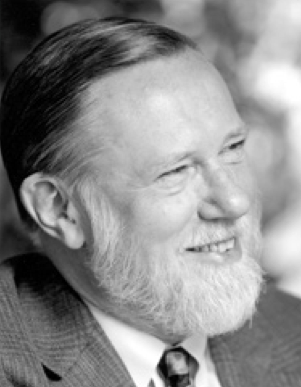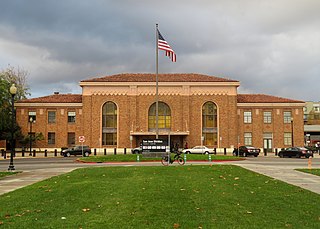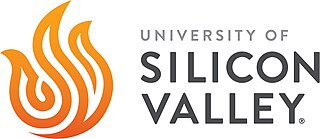
Ethnography is a branch of anthropology and the systematic study of individual cultures. Ethnography explores cultural phenomena from the point of view of the subject of the study. Ethnography is also a type of social research that involves examining the behavior of the participants in a given social situation and understanding the group members' own interpretation of such behavior.

Charles Matthew "Chuck" Geschke was an American businessman and computer scientist best known for founding the graphics and publishing software company Adobe Inc. with John Warnock in 1982, with whom he also co-created the PDF document format.
A technical writer is a professional communicator whose task is to convey complex information in simple terms to an audience of the general public or a very select group of readers. Technical writers research and create information through a variety of delivery media. Example types of information include online help, manuals, white papers, design specifications, project plans, and software test plans. With the rise of e-learning, technical writers are increasingly hired to develop online training material.

Visual anthropology is a subfield of social anthropology that is concerned, in part, with the study and production of ethnographic photography, film and, since the mid-1990s, new media. More recently it has been used by historians of science and visual culture. Although sometimes wrongly conflated with ethnographic film, visual anthropology encompasses much more, including the anthropological study of all visual representations such as dance and other kinds of performance, museums and archiving, all visual arts, and the production and reception of mass media. Histories and analyses of representations from many cultures are part of visual anthropology: research topics include sandpaintings, tattoos, sculptures and reliefs, cave paintings, scrimshaw, jewelry, hieroglyphics, paintings and photographs. Also within the province of the subfield are studies of human vision, properties of media, the relationship of visual form and function, and applied, collaborative uses of visual representations.

San Jose Diridon station is the central passenger rail depot for San Jose, California. It also serves as a major intermodal transit center for Santa Clara County and Silicon Valley. The station is named after former Santa Clara County Supervisor Rod Diridon Sr.

Field research, field studies, or fieldwork is the collection of raw data outside a laboratory, library, or workplace setting. The approaches and methods used in field research vary across disciplines. For example, biologists who conduct field research may simply observe animals interacting with their environments, whereas social scientists conducting field research may interview or observe people in their natural environments to learn their languages, folklore, and social structures.
The UCSC Silicon Valley Initiatives are a series of educational and research activities which together increase the presence of the University of California in Silicon Valley. To that end, UC Santa Cruz has set up a 90,000 square-foot satellite campus called the University of Santa Cruz Silicon Valley Campus (SVC), currently located on Bowers street in Santa Clara, California, where it has been since April 2016 The Initiatives, still in the early stages of their development, have had ambitious hopes attached to them by UCSC, among them the possibility of a home for the University's long-planned graduate school of management and the Bio|Info|Nano R&D Institute. It currently houses professional the SVLink incubator-accelerator program, programs and a distance education site for the UCSC Baskin School of Engineering, the UCSC Silicon Valley Extension, the Office of Industry Alliances and Technology Commercialization leadership, and the University of California's online learning program, UC Scout.
San Jose, California, is the third largest city in the state, and the largest of all cities in the San Francisco Bay Area and Northern California, with a population of 1,021,795.

The Silicon Valley Leadership Group is a non-profit advocacy group in Silicon Valley, California, in the United States. Its members are businesses that operate in the valley and its purpose is to influence public policy relating to the valley.
Santa Clara County, California, is one of California's original counties, with prior habitation dating from prehistory to the Alta California period.

John Collier Jr. was an American anthropologist and an early leader in the fields of visual anthropology and applied anthropology. His emphasis on analysis and use of still photographs in ethnography led him to significant contributions in other subfields of anthropology, especially the applied anthropology of education. His book, Visual Anthropology: Photography as a Research Method (1967) is one of the earliest textbooks in the field. His photographs are archived at the Maxwell Museum of Anthropology at the University of New Mexico in Albuquerque.
James M. Freeman is an American anthropologist, and professor at San Jose State University.

The University of Silicon Valley (USV) is a private for-profit university in San Jose, California, in Silicon Valley. Founded in 1887 as Cogswell Technical School, and later known as Cogswell Polytechnical College. It was the first technical training institution in the Western United States and one of only two private universities, along with Stanford University, that were originally guaranteed a tax exemption in the Californian Constitution. USV is accredited by the WASC Senior College and University Commission. Programs at Cogswell range from digital media to engineering, with an emphasis on digital animation, audio and music production, and video game design.
The Silicon Valley BART extension is an ongoing effort to expand the Green and Orange Line service by Bay Area Rapid Transit (BART) into Santa Clara County via the East Bay from its former terminus at the Fremont station in Alameda County. Planned since at least 1981, the project has seven stations in three sequential phases.

Heather A. Horst is a social anthropologist and media studies academic and author who writes on material culture, mobility, and the mediation of social relations. In 2020 she became the Director of the Institute for Culture and Society at Western Sydney University where she is a Professor and is also a lead investigator in the ARC Centre of Excellence for Automated Decision-Making and Society. Prior to this she was a professor of Media and Communications at the University of Sydney from 2017 and Vice Chancellor's Senior Research Fellow in the School of Media and Communication at RMIT University in Melbourne, Australia from 2011. She has also been a Research Fellow in the MA program in digital anthropology at University College London.
Jane Carter Goodale (1926–2008) was an American anthropologist, author, photographer, and professor who worked to bring attention to the roles of women in Oceania and Australia through her extensive research in the field of ethnography. Having written and co-written numerous books and articles, the most notable being Tiwi Wives (1971), To Sing with Pigs Is Human (1995), The Two-Party Line (1996), Goodale's achievements and contributions to her field continue to have major importance in the sociological role of women as well as in continuing the field of ethnography today. Goodale received her BA and MA from Radcliffe College and later her PhD from the University of Pennsylvania. Goodale began her teaching career at Bryn Mawr College as a part-time instructor in 1959, becoming a full professor in the department of Anthropology in 1975, and served there until her retirement in 1996, when she became Professor Emerita. She also held teaching positions at Barnard College, the University of Pennsylvania, and the Darwin Institute of Technology. Goodale worked to bring attention and notability to the ethnographic research, dedicating her work and encouraging her students in the collection of facts and information on other cultures during a time when many felt the practice was outdated and ineffective.

Arnnon Geshuri is an American corporate executive. He was vice president of human resources at Tesla, Inc. from 2009 until 2017, senior director of human resources and staffing at Google from 2004 to 2009, and vice president of people operations and director of global staffing at E-Trade Financial Corporation circa 2002. In 2023 he is Chief People Officer at Teladoc Health.
Elizabeth "Dori" Tunstall is a design anthropologist, researcher, academic leader, writer, and educator. She was dean of the faculty of design at OCAD University in Toronto, Canada, from 2016–2023, and the first black dean of a faculty of design anywhere. Tunstall holds a PhD and an MA in anthropology from Stanford University [1994–1999] and a BA in anthropology from Bryn Mawr College [1990–1994].

Super Micro Computer, Inc., dba Supermicro, is an American information technology company based in San Jose, California. The company is one of the largest producers of high-performance and high-efficiency servers, while also providing server management software, and storage systems for various markets, including enterprise data centers, cloud computing, artificial intelligence, 5G and edge computing. Supermicro was founded on November 1, 1993, and has manufacturing operations in Silicon Valley, the Netherlands, and in Taiwan at its Science and Technology Park.
E-Lab was a research and design consultancy established in Chicago, Illinois in 1994 by Rick Robinson, John Cain and Mary Beth McCarthy. The firm and its founders were part of a movement in the late 1980s when organizations such as Xerox/PARC (Palo Alto Research Center], IBM, Institute for Research on Learning and Jay Doblin & Associates embraced social science approaches in their product design and development efforts. E-Lab became known for pioneering a multidisciplinary, human-centric methodology strongly guided by anthropology and ethnography that was equally balanced between research and design. Its approach challenged conventional market research by prioritizing real-world user experiences and behaviors uncovered through fieldwork, helping to establish new practices termed "human-centered design," "design ethnography" and "design anthropology." In 1996, the business magazine Fast Company characterized E-Lab's approach as "simple but subversive" and "at the forefront of a growing movement to rethink how companies understand customers and create products that meet their needs."









